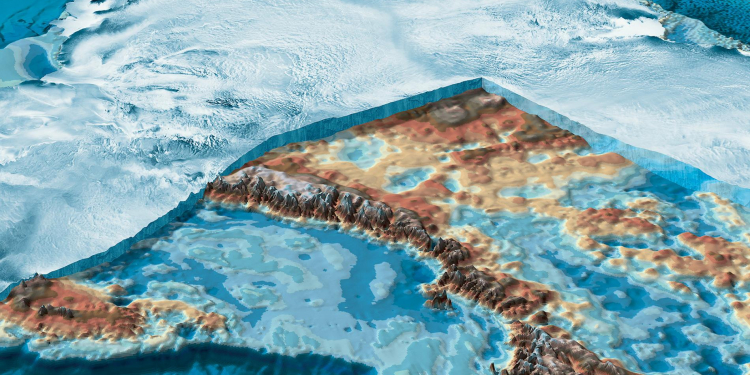The FINANCIAL — First active leak of greenhouse gas – Methane discovered in Antarctica. Scientists have long warned about the impact on the planet if methane leaks. Methane is a particularly powerful greenhouse gas due to its ability to absorb heat. Over a 20-year period, a kilogram of methane warms the planet as much as 80 times more than a kilogram of carbon dioxide. The reason for the emergence of the new seep remains a mystery.
Antarctica is estimated to contain as much as a quarter of Earth’s marine methane, and scientists have now revealed the first leak of the gas from the seabed, prompting major concerns about the impact on the global climate crisis. Methane is a particularly powerful greenhouse gas due to its ability to absorb heat. Over a 20-year period, a kilogram of methane warms the planet as much as 80 times more than a kilogram of carbon dioxide. Divers first spotted the leak in 2011 and after revisiting the site on subsequent occasions they found that certain types of microbes which would normally adapt and proliferate at a new source of the gas, thereby consuming and limiting the amount of methane escaping into the atmosphere, were slow to respond to the leak, The independent reported.
Scientists have long warned about the impact on the planet if methane leaks — something that is caused by melting ice as global temperatures rise. NASA warned in 2018 that the thawing of ice in the Arctic could release gases like methane, contributing to an even faster global heating that was not taken into account in climate projections, Business Insider wrote.
NASA-funded research has discovered that Arctic permafrost’s expected gradual thawing and the associated release of greenhouse gases to the atmosphere may actually be sped up by instances of a relatively little known process called abrupt thawing. Abrupt thawing takes place under a certain type of Arctic lake, known as a thermokarst lake that forms as permafrost thaws.
The Arctic landscape stores one of the largest natural reservoirs of organic carbon in the world in its frozen soils. But once thawed, soil microbes in the permafrost can turn that carbon into the greenhouse gases carbon dioxide and methane, which then enter into the atmosphere and contribute to climate warming, according to NASA.
These ancient greenhouse gases, produced from microbes chewing through ancient carbon stored in the soil, range from 2,000 to 43,000 years old. Walter Anthony and her colleagues captured methane bubbling out of 72 locations in 11 thermokarst lakes in Alaska and Siberia to measure the amount of gas released from the permafrost below the lakes, as well as used radiocarbon dating on captured samples to determine their age. They compared the emissions from lakes to five locations where gradual thawing occurs. In addition, they used the field measurements to evaluate how well their model simulated the natural field conditions, wrote in 2018 Ellen Gray, NASA’s journalist.
Divers have frequented the site of the leak at Cinder Cones in McMurdo Sound since the 60s and a visit in 2011 first spotted the leak which had appeared spontaneously. But due to the inaccessibility of the region it took until 2016 for scientists to study the leak and a further four years to research and publish scientific paper. During this 2016 expedition, a second leak was also found. However, while much is known about the carbon cycle, little is understood about the global lifecycle of methane, making it hard to control and limit, as reported by Daily Mail.
The reason for the emergence of the new seep remains a mystery, but it is probably not global heating, as the Ross Sea where it was found has yet to warm significantly. The research also has significance for climate models, which currently do not account for a delay in the microbial consumption of escaping methane. The release of methane from frozen underwater stores or permafrost regions is one of the key tipping points that scientists are concerned about, which occur when a particular impact of global heating becomes unstoppable, according to The Irish Times.
Earlier this year, Amazon’s chief executive and the world’s wealthiest man Jeff Bezos announced, that he will commit $10 billion to fund scientists, activists and NGOs to help preserve and protect the natural world. About launching the Bezos Earth Fund, Amazon’s founder wrote in his Instagram post: “Climate change is the biggest threat to our planet. I want to work alongside others both to amplify known ways and to explore new ways of fighting the devastating impact of climate change on this planet we all share.” Read more.































Discussion about this post